Cachaça is best known in the U.S. as the fairly obscure Brazilian liquor that is mixed into caipirinhas, a cocktail that enjoyed a lot of success in New York about ten years ago (it came into fashion after the mojito). In Brazil, it´s quite another story.
Cachaça is the second most popular alcoholic beverage there after beer: and not just in mixed drinks either. Like whisky, scotch and even wine, it pays to sip this lucious drink on it’s own. There are literally thousands and thousands of cachaça micro-breweries that we never hear about in America. At home I usually only see the mass produced Pitú, Prassununga 51 and Ypióca. These pedestrian beverages are best served mixed with other things, as in caipirinhas or even with cola, like rum in a Cuba Libre. Pitú even produces a canned drink that is that exact thing, though it’s only available on native soil as far as I know. (It doesn’t taste that great so don’t waste your time.)
On our recent trip to Brazil, I made a point of sampling cachaça wherever I could. Ten years ago that wasn´t that hard. It was served everywhere and retail outlets carried numerous varieties. This time around, wine seems to have made a big splash on the Brazilian palate and, as a result, cachaça´s tough to find, at least on restaurant menus. I did have a fine glass of it straight at Perequim in Ubatuba, where the menu seemed to imply that the drink was imported (It was from Minas Gerais, the ajacent state and the biggest producer, rather than São Paulo state, where we were dining at the time). Unfortunately we could never figure out where the cachaça was actually produced. Neither the waiter nor the menu could say. Too bad, as it was marvelous!
Hegui just finished a short book on cachaça, Cachaça: o mais Brasileiro dos Prazeres, written by a Brazilian oficianado and apologist, Sr. Dr. Jairo Martins da Silva. Da Silva says that the drink was banned for many years by the Portuguese when they dominated Brazil to help the markets for wine and port, all from the motherland. As a result, hundreds of nicknames for the stuff sprouted up all over the place as a way to stay under the radar of the authorities: aguaradente, pinga, virgem, quebra-munheca and obesessão are just a few.
As I’ve already mentioned, cachaça comes in numerous varieties with variable prices and generally limited availability. Often perfectly delicious aguardentes can be found for about $5 a bottle in Brazil. In Olegário Maciel, MG, a miniscule town that happens to be Hegui’s birthplace, we had this incredible version, Amelia, by the glass at the bar for that price per bottle. I got one to take home as it was so good. On the other hand, some very fancy ones can go for hundreds of dollars a bottle. (We didn’t try any of these this time).
Luis knows my fascination with this national drink, so while we visited him and Sávio in Vitória, he took us to a cachaçeria in the coastal city just to the south, Guarapari, ES. Reserva do Gerente has won awards for their pinga.
The stuff all comes from sugarcane that’s fermented then distilled. I’m not completely clear on what causes the alcohol level to be less than 100% as I’d guess somehow that the sugar in sugarcane would all be converted to alcohol, but then I haven’t read the good Doctor’s book either.
Cachaça can be clear, which is called silver, or prata in Portuguese, similar to tequila nomenclature. Many of them are aged in wooden barrels for various periods of time. The award winning one at Reserva do Gerente spent five years in oak. Our cachaça author par excellence, Martins da Silva, pooh-poohs that French practice, recommending instead that the drink should be aged in Brazilian wood only, to give it that specific local character and make it a true expression of national pride. I have to agree with him as I most enjoyed the Cachaça Reserva do Gerente Depositada em tonéis de Castanha do Brasil, or the cachaça aged in barrels of Brazil nut wood. It was smoothest.
I’d never been to a cachaçaria before. It was similar to wine tasting. I don’t really understand the drink well enough to offer an opinion as to taste beyond what I like. All of these drinks smell like alcohol. Though they can also have wonderful spice, herbal and flower aromas. They’re strong too. The Reserva do Gerente aged in Brazil nut wood comes in at 42% alcohol. Wow! The aged ones all have a golden color (they´re called ouro or gold) and often do taste of oak, though again, there’s a lot of other exciting flavors going on in the glass. The best thing to do is to try these drinks on your own. Really, a trip to Brazil is the way to go if you can swing it.
Reserva do Gerente itself was commercial but not pushy. They let us wander around on our own, including in their cave of barrels of the precious liquid. Tasting was free and the bottle of pinga that I got to take back to São José dos Campos for Hegui’s brother-in-law, Carlos, was only about $7. (And don’t think that I’m being cheap here. This quebra-munheca was particularly wonderful.) As an added bonus, there were many tropical fruit trees bearing starfruit, guava, jack fruit and mango, from which we ate freely, all at no cost. That just doesn’t happen in Napa.
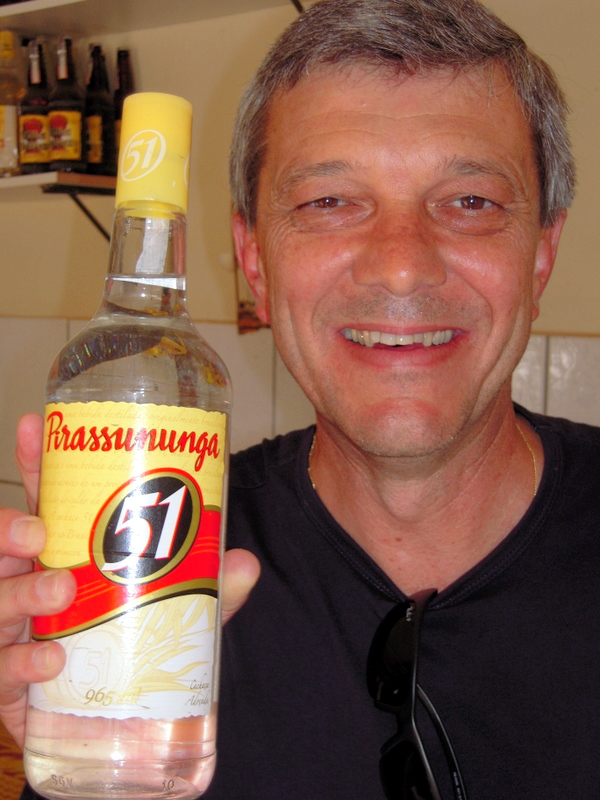
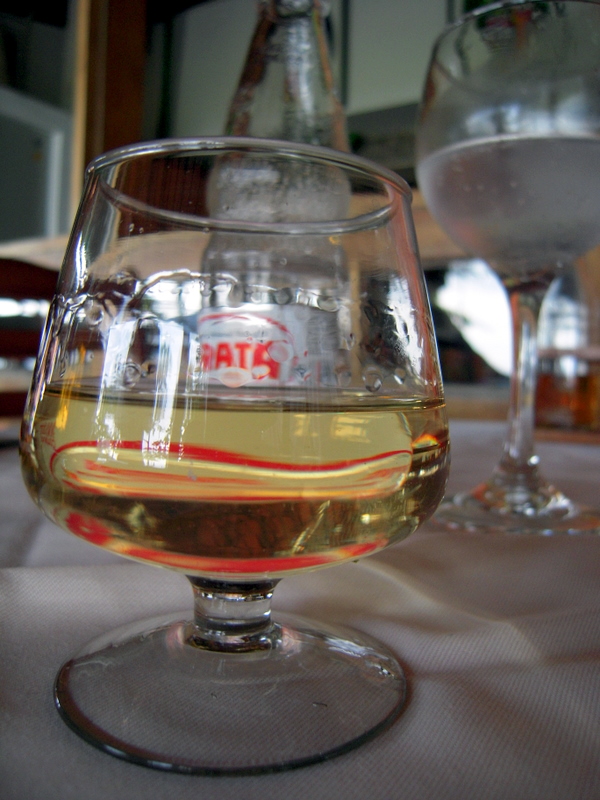
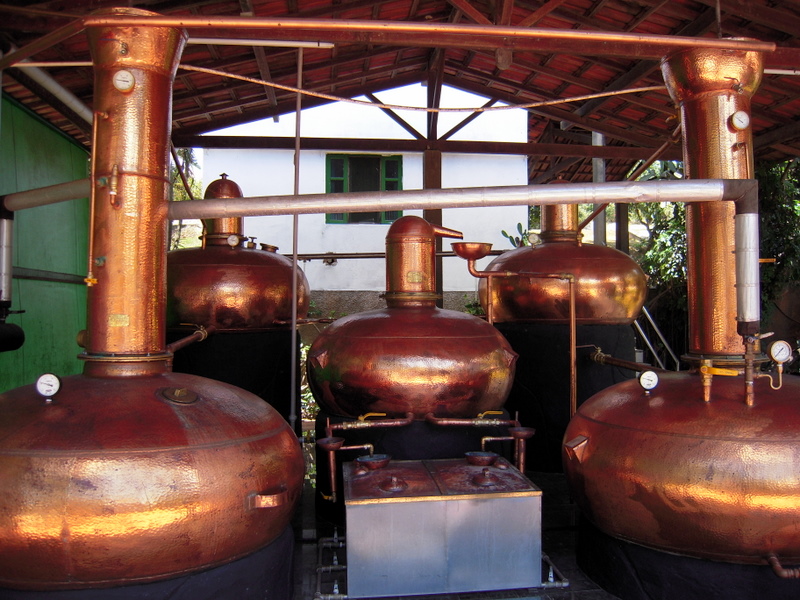
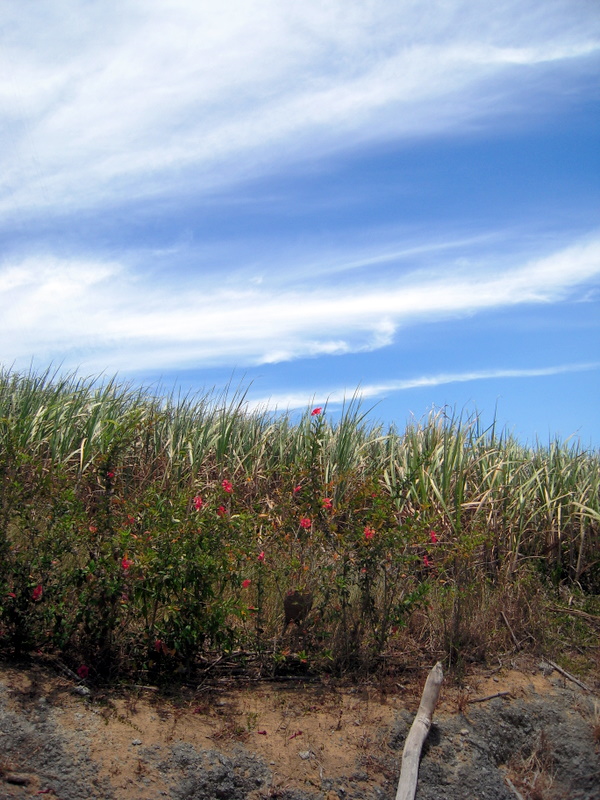
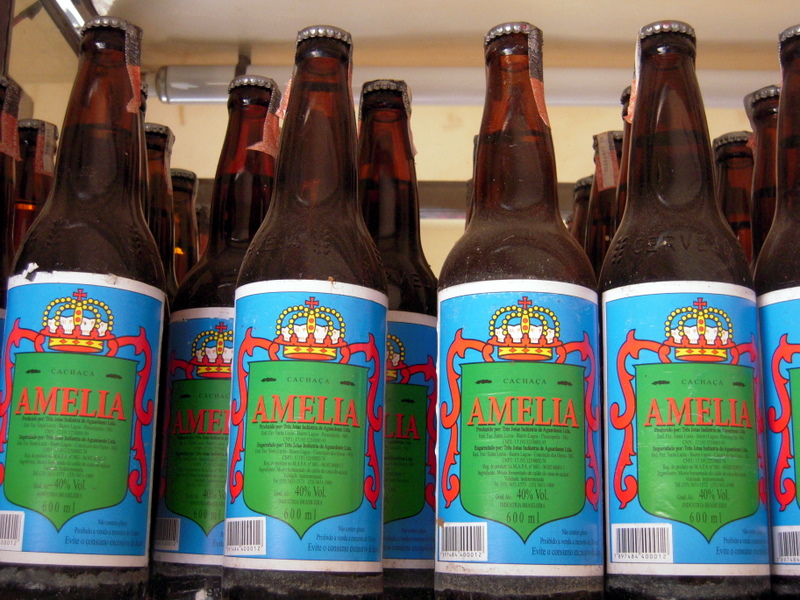
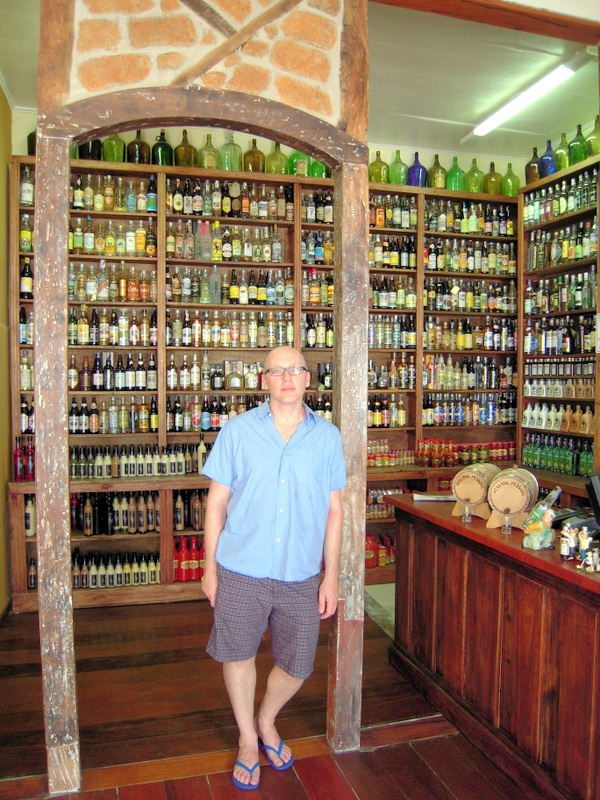
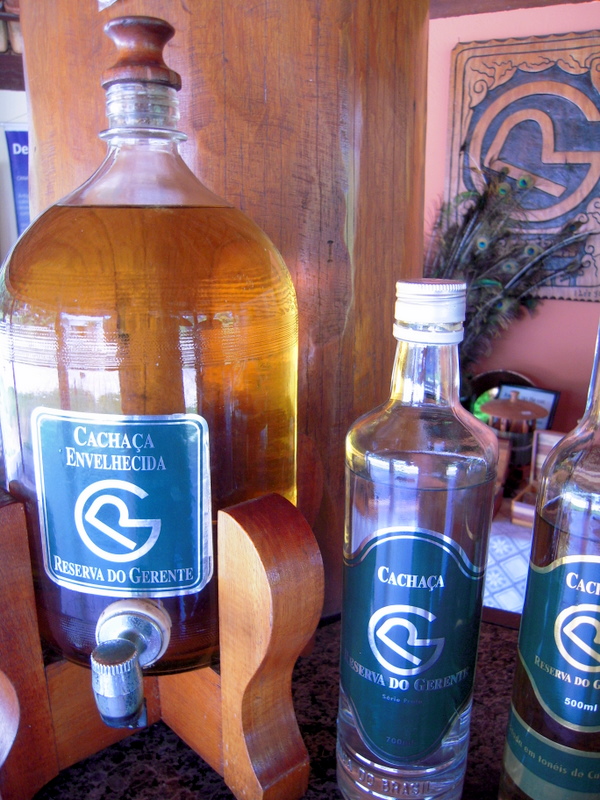
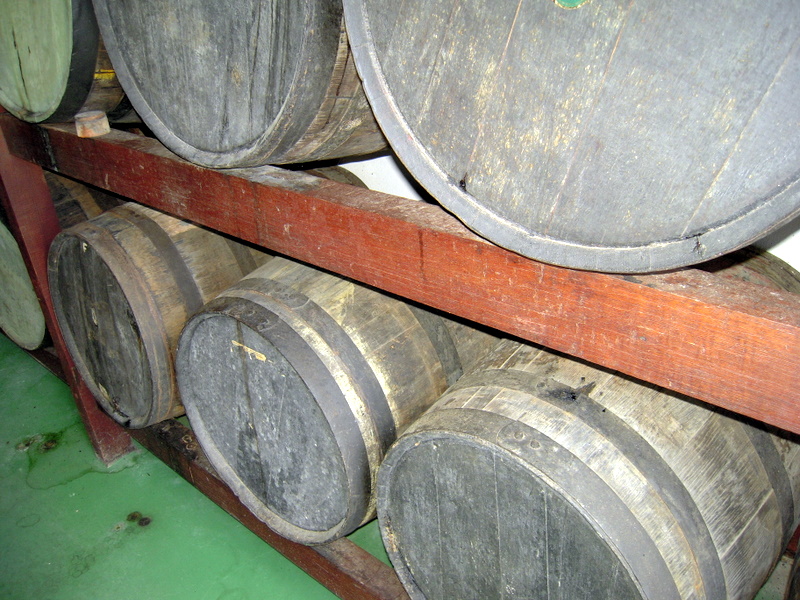
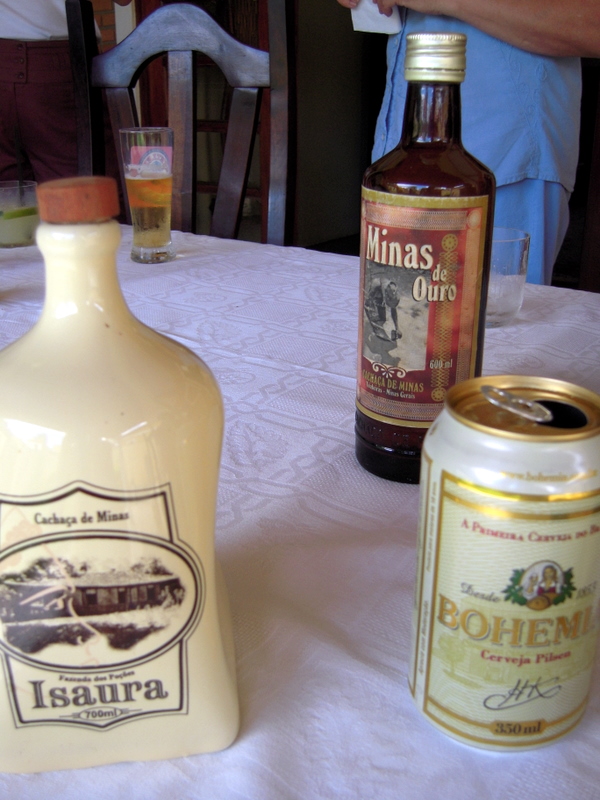
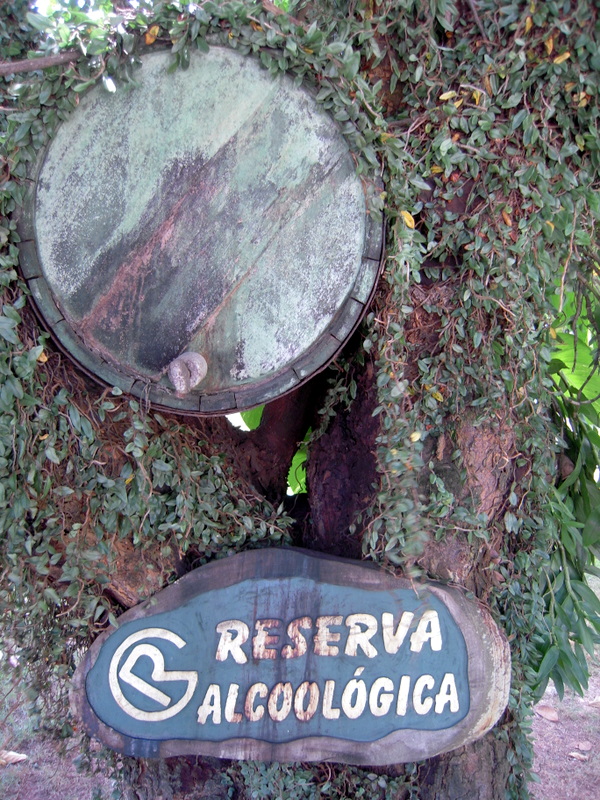
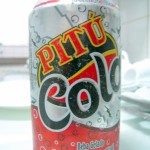
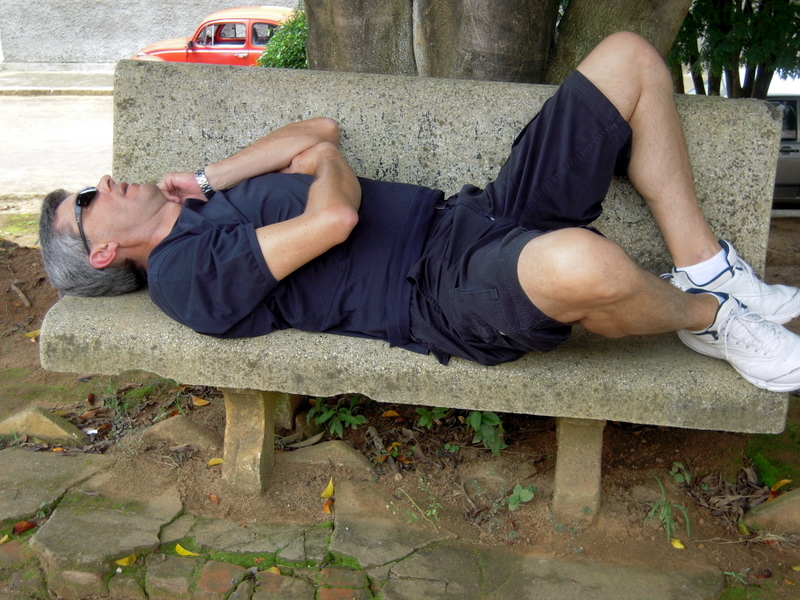
Comments on this entry are closed.
Um, has anyone noticed my caipirinha is empty?
Hope you’re having a fabulous visit.